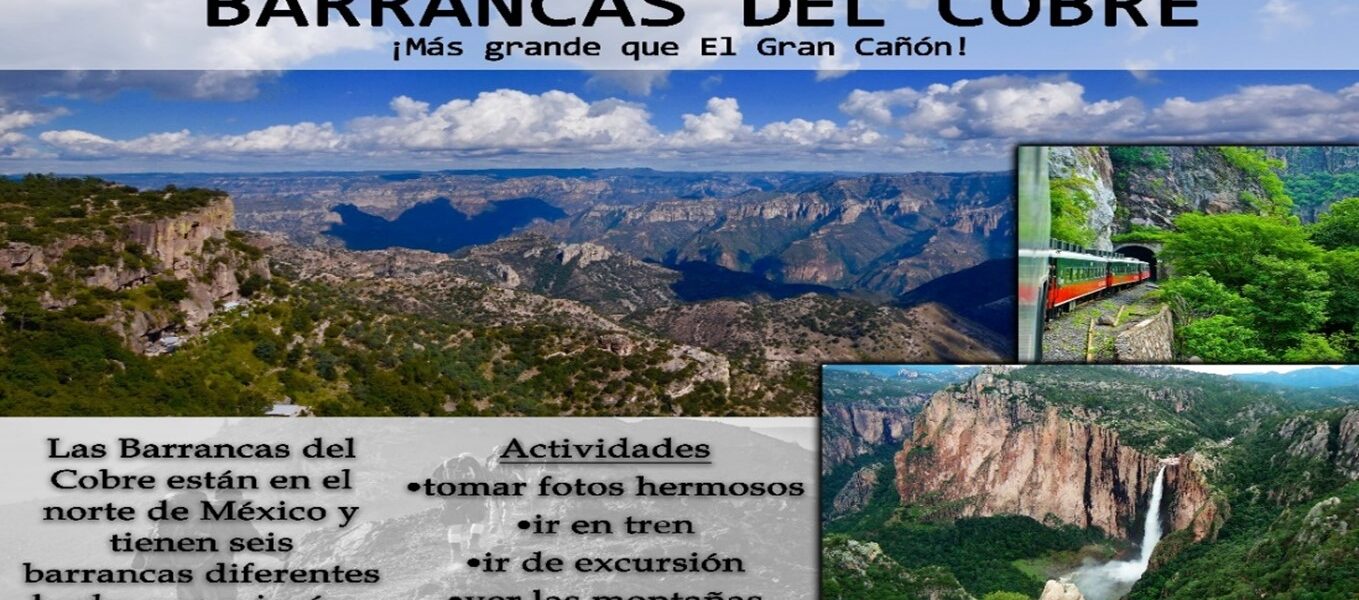A Culture and Linguistic Journey through Spanish and German with the Aid of Electronic Posters
By Dr. Claudia Sanford and Dr. Michael B. Dettinger, Louisiana State University
 .
. 
DOI: https://www.doi.org/10.69732/GYFP9129
Introduction
As we settle back into normal teaching modes now that we have experienced over two years of working around COVID-19, instructors of world languages continue to challenge themselves on how to best integrate technology into our teaching. At the height of the pandemic, we all became familiar with synchronous delivery via Zoom or an analogous conferencing tool. Additionally, we were also tasked with maintaining the integration of innovative technologies to enhance student learning. At our university we have often discussed what elements of our 100% online teaching should be incorporated and/or left out of course designs now that most of us have returned to teaching in more traditional face-to-face (F2F) modes. With the myriad of choices of technical and interactive tools to choose from, it can be cumbersome to decide on one. Moreover, we must choose wisely, as it is not the goal to simply use the technology for the sake of using it; our students must gain something from it, be that improving speaking skills, reading comprehension, enhanced writing and listening, or a better understanding of culture. In this essay, we focus on how we aimed to improve students’ cultural understanding and awareness by embarking on a virtual poster project for Spanish and German language students.
The use of technology in learning with a cultural purpose allows foreign language classrooms to create a framework where the world becomes accessible. For students who cannot afford to study abroad, technology can bring the world to them. By connecting traditional language learning with the realities and ways of life in Spanish- and German-speaking cultures, students can make comparisons, connections, and demonstrate an understanding of the relationship between these cultures and their own traditions. This approach also helps students connect with other disciplines and acquire new information while reinforcing their knowledge.
As we discuss below, the approach in this study was for students enrolled in second semester Spanish and German classes to enhance their cultural knowledge of their respective language by creating virtual poster presentations and participating in cultural forum assignments. To accomplish this, students were assigned specific tasks using the internet and specific web tools on a culturally related topic. According to the National Standards in Foreign Language Education Project (2015), “the true content of the foreign language course is not the grammar and the vocabulary of the language, but the cultures expressed through that language” (p. 43). Therefore, our hope was for students to also utilize and improve their language skills, to share their knowledge with one another, and reflect on each of these tasks, with the goal of having a better understanding and appreciation of Spanish and German culture.
Learning Activities
Spanish
The Spanish course from this study was the second of the four required semesters of Spanish for graduation. The course met in person four times a week. The course covered five lessons: De Compras (Shopping), La Rutina Diaria (Daily Routine), La Comida (Food), Las Fiestas (Parties and Celebrations), and el Consultorio (The Doctor’s Office). The curriculum emphasized grammar, but included some cultural components. To have alternative opportunities outside the brick-and-mortar classroom for individual virtual cultural experiences and interaction with other students, cultural forums were also incorporated. After the instructor’s initial prompt, students replied with their perspectives before viewing other students’ posts. The criteria for selecting the video materials were consistent with the unit themes from the textbook. They provided the students with new knowledge that could be transferred into the design of electronic posters in Spanish. By doing so, The instructor hoped that students would gain a better understanding of the culture of the specific geographical areas under study by writing in Spanish and connecting cultural awareness with language learning.
They provided the students with new knowledge that could be transferred into the design of electronic posters in Spanish. By doing so, we hoped students would better understand the culture of the specific geographical areas under study by writing in Spanish and connecting cultural awareness and language learning.
What was the student experience like in designing electronic posters in Spanish, utilizing the grammatical structures they had learned prior to class, practiced during class, and reinforced after class?
The design of the Spanish course aimed to foster collaborative learning and differentiated instruction within the curriculum. This was achieved through the incorporation of student-led virtual discussions paired with a cultural forum assignment in the Learning Management System (LMS). These cultural forums featured brief cultural video materials, allowing students to select content based on their interests from a provided list curated by the instructor. Subsequently, students would write an entry in English, reflecting on the cultural material they had absorbed and connecting it to their own personal experiences. To further enhance the learning experience, each student would engage with their peers by offering feedback and comments on their classmates’ work.
The selection of video materials for the cultural forums was aligned with the thematic units outlined in the textbook. Additionally, the instructional and pedagogical approach aimed to equip students with fresh insights that could be applied to the creation of electronic posters in Spanish.
The primary objective of this course was to establish an environment conducive to cooperative learning, promoting improved learning performance and a deeper understanding through critical thinking that intertwined language and culture with students’ personal experiences. Ultimately, it aimed to empower students with new knowledge that could be effectively utilized in crafting Spanish-language electronic posters.
Electronic Posters
After completing the cultural forum, students designed an electronic poster to present to the class by using the website www.postermywall.com. I chose this application because students can create custom posters and because the app is very user-friendly. It has a wide variety of templates that complements many different events and functions, and no membership is required.
The learning objectives for this electronic poster design were to focus on writing, speaking, and presentational skills in Spanish. In addition, posters help maintain students’ interest in a particular area of the cultural material. Posters play an important role in sustaining students’ interest with specific cultural materials. Writing in Spanish serves as a medium for students to articulate this interest, exemplified by describing potential activities that can be undertaken at specific locations, as experienced by the locals. Students chose a landmark, a city, or a geographical aspect of their preference in addition to the cultural forum resources.While a student or a group of students presented their posters, the rest of the class submitted peer reviews to the instructor, guided by a rubric. These reviews were later summarized by the instructor and provided to the presenting student or group, allowing for the incorporation of feedback on grammar, culture, and presentation skills as a whole. This comprehensive approach enhanced the overall learning experience. Below is an example of one student’s poster from the Spanish course.
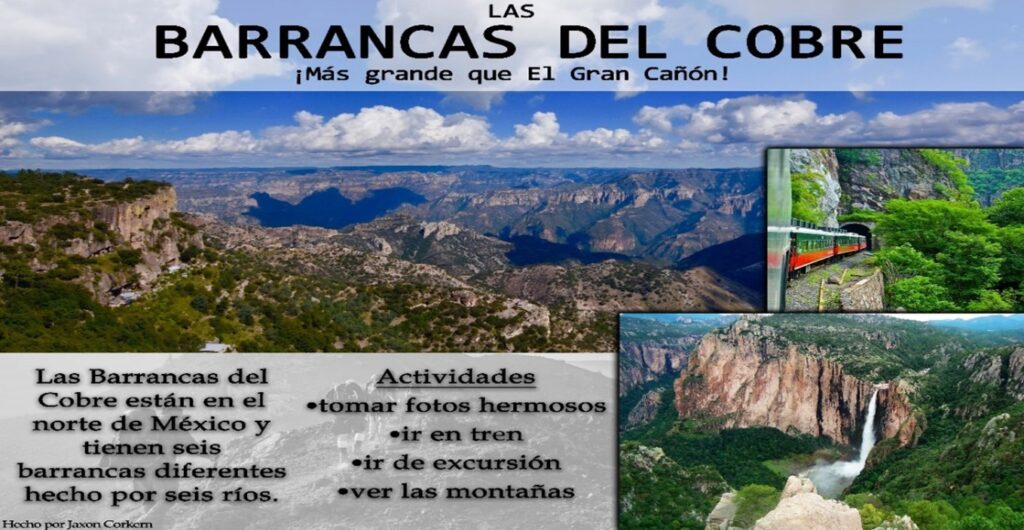
Picture 1 – Spanish Poster Presentation: La Geografía en México
The Copper Canyon, also known as the Copper Canyon System, is a group of canyons located in the state of Chihuahua, in northern Mexico. This canyon system is one of the largest and deepest in the world. These canyons are much deeper and more extensive than the famous Grand Canyon in the United States.
This example fulfills the assignment because the student connected foreign language and geographical facts well. The student decided to investigate Las Barrancas del Cobre. He could describe, expand and compare with his previous knowledge about the Grand Canyon. He was fascinated by this information. The presentation to the class was confident and fun, and the knowledge was shared with all to better understand Spanish grammar within the context of a specific reality. This context refers to the student’s focus on a real-world geographical location, Las Barrancas del Cobre, and its comparison to the well-known Grand Canyon. It means that the student didn’t just study abstract language rules but applied them to describe and compare actual places, making the language learning experience more tangible and practical. For example:” Las Barrancas del Cobre es uno de los más profundos en el sistema, location: Están en el norte de México”. (The Urique Canyon is one of the deepest in the system.)
German
The German course from this study was a second semester course that met in person four times per week. The course covered five chapters which emphasized both grammar and cultural components. In fact, the book’s authors emphasize the importance of culture in that having a better understanding of it allows learners to understand the language and grammar more easily. The German course covered the following cultural content about the German-speaking world: (öffentliche Verkehrsmittel) Public Transportation, (das deutsche Schulsystem) the German School System, (Deutschlands Nachbarländer) Germany’s Neighboring Countries with particular focus on Austria and Switzerland, (Krankenversicherung) the German Healthcare System, and (Unterhaltung) Entertainment, such as popular television, literature, and the film industry. The textbook and its online component, the Interactive, provided texts, videos, and exercises pertaining to these topics. While we felt these gave students an ample amount of content to provide a foundation of knowledge on these topics, we wanted students to explore and search various internet sources to build on this foundation and deepen their understanding. This included searching websites of Austrian coffee shops, websites of German universities, and viewing YouTube videos which focused on public transportation in Germany and differences in German language dialects.
The five cultural topics identified above were covered in individual chapters. In addition to the content covered in the textbook and online Interactive, students also completed an additional cultural assignment where they were required to answer specific questions about a particular website or YouTube video. Additionally, they were required to create two virtual poster board presentations using the website www.postermywall.com. To accomplish this, I provided them with access to the site and created a sample poster for them to view and use as a template. Students uploaded four to six images and provided a brief description of each in German. Additionally, students presented their poster to their classmates. The first poster board presentation focused on a cultural aspect of Austria and students presented their work to each other in the German language course. Below is an example of one student’s poster from the German course.
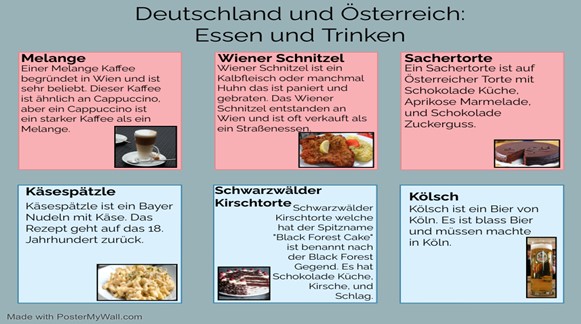
Spanish and German Course Co-Presentations
The second poster board presentation focused on a topic of the students’ choice but had to be on a particular cultural component learned over the semester. For this assignment, students from the German course met with students from the Spanish course for a group gathering where they all shared their work with one another. In the first half of this group meeting students from each course used their laptops with their poster presentation visible for each other to see and were able to interact and talk about their topic in English. This allowed for a relaxed environment for students to interact with one another and learn more about each other’s topics. In the second half of this meeting, three students from each course then presented their topics to the entire group, which was done in the target language. While students in the other language class may not have been able to understand what was said, they were able to grasp the content based on the images displayed. Moreover, it was good practice for them to present in front of a group in the target language. Below are several images with the Spanish and German poster presentation gathering.
Each semester students are part of a specific class. They are not connected with other groups; usually, different languages never collaborate. The results of mixing the language groups (Spanish and German) created the opportunity to bring the reality of our world with different cultures and languages to a small session where our students discovered that the same approach could be applied to other languages. Still, most importantly, students could share their work’s process and results, especially considering that for most students, English was their first language. Spanish students learned about places and ways of life in Germany, and German students learned about Spanish cultures, places, and ways of life. A Spanish student from Russia was even able to share his experiences in Germany with a German student.
In the beginning, the students were reserved and cautious, there were no spontaneous interactions. We asked one class to look at the work from the other class and vice-versa slowly; the dynamic experience was relaxed, and the students sincerely enjoyed each other’s company. If possible, mixing language groups should be encouraged and incorporated for the benefit of the students. This holistic experience at the end of the semester was rewarding for both the students and the instructors.
Several students expressed their thoughts about the meeting by saying:
“I think coming together and learning about what the other students had to present was very effective”.
“Listening to another student speak the language while presenting can sometimes be extremely beneficial as they may be on the same level as you and might speak/pronounce words more similarly to the way you would”.
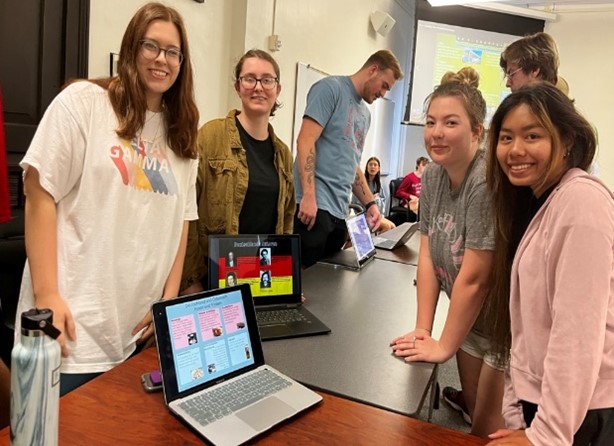
Methods
With our goal being to better understand students’ perceptions of learning culture through these virtual poster presentation activities, we surveyed them about their views of this method. In the final week of the semester, 27 students from fifteen different majors from both introductory courses in Spanish and German participated in a perception survey that included Likert-type and open-ended questions. Our analysis of these data produced two themes: convenience and language acquisition. Below is an overview of these results.
Quantitative Results
The quantitative survey results showed that students had a positive experience learning culture through creating virtual posters. Out of the 27 students surveyed, 43.3% were extremely satisfied, 26.7% were moderately satisfied, only 6.7% were slightly satisfied, and 0% were extremely dissatisfied with presenting their posters to their classmates and students from the other language course (German or Spanish).
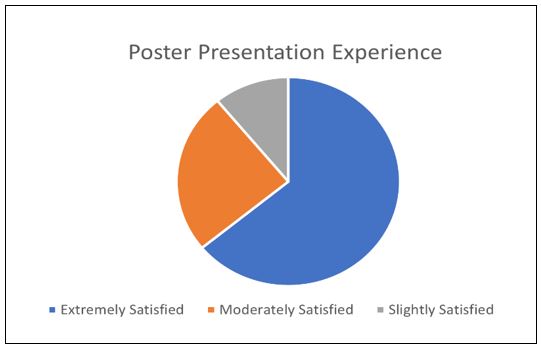
We also asked students if they preferred learning a foreign language and its culture through virtual posters compared to traditional methods like textbooks. The results (shown in Picture 5) indicated that students enjoyed this method of learning. While the textbook provides current and authentic cultural content, it has limitations in covering a wide range of culture. Introducing students to other sources like the internet, films, and personal experiences can enhance their cultural and language learning. Some students mentioned that videos on YouTube were more specific and in-depth compared to the book. They found this kind of learning engaging and felt it helped them retain information better than just studying the textbook.
Use of Technology VS. Learning Only from Textbook

Qualitative Results
These data indicate this type of activity can provide students with a unique learning opportunity that enhances their language skills and cultural awareness, but also prepares them to interact with and share content with their peers.
The quantitative results described above provided us with a good, overall impression on students’ views of learning culture with this approach. While we were pleased with the statistical data from the Likert-type questions, we also wanted to determine why students responded the way they did. To accomplish this, we also asked them multiple open-ended questions, which provided us with a deeper understanding of their perceptions of learning culture and language via Experiential Learning.
We felt utilizing this mixed methods approach allowed students to open up in their responses and afforded them the opportunity to explain their survey responses in more detail. Doing so also gave us a better idea of the students’ perceptions which can help us in future design and implementation of this type of project.
Based on students’ responses, we noticed that they found the virtual poster presentations to be effective towards their language acquisition and cultural understanding. For example, one student responded, “It was fun getting to make a poster on virtually any topic related to Germany, and I’m glad I got to present it in German and practice my German speaking skills.” Another student added, “…the posters help to give more of a cultural background.”
In another instance we asked, “Please rate your experience presenting your poster with your classmates and the students from the other language course?” One student replied, “It was nice getting to mingle with the Spanish class and share our posters with each other and watch some of the Spanish presentations.” Another student answered, “It was so cool to learn about other cultures and [it] furthered my speaking skills”.
Conclusion
This study’s main goal was to enhance student’s cultural understanding and awareness of the Spanish- and German-speaking worlds. We designed conditions for collaborative learning as a pedagogical approach, which we found, based on our own observations. witnessing the students connect with the content and succeed in their posters and presentations, that this design helped to promote learning performance and critical thinking, connecting students with language and culture. By implementing virtual poster presentations in the foreign language classroom, our students had the opportunity to take ownership of their learning and to create a product that felt authentic to them.
We provided an environment, either physical or virtual, to enhance students’ learning and solidify students taking ownership and initiative for their learning rather than relying exclusively on the instructor. This allowed them to transition from a unidirectional to a multidimensional process. The teaching-learning process requires adequate instructor instructional design, and student support is fundamental. However, there is a limitation because only two sections were part of the study. A follow-up second phase of the study should follow, including more class sections.
Also, while this was an overall positive and practical approach for students, some held negative views of their experiences. For instance, one student remarked, “I am not a fan of videos for learning. They make me anxious and harder for me to learn”, or “the online part was the least helpful.” Nevertheless, we welcome this feedback from students as it allows us to reflect on how we can improve our course design for future classes. It would allow us, for instance, to distribute a brief survey at the beginning of a semester to see what activities are most beneficial to students’ learning needs and prepare them to use digital media as a learning option. The differences in classroom behaviors of different individuals make it difficult for researchers to measure them scientifically.
The students’ course experiences confirmed how this instructional medium was beneficial for integrating language and cultural learning. Some students mentioned on the course feedback and during their final presentations how one of their favorite assignments was using this instructional tool because it boosted their confidence and presentation skills. Moreover, students participating in forum activities allowed for them to not only apply their language skills on cultural topics, but also to reflect on their experience learning more about specific cultural topics. While the textbook and its online components offered students a foundation of learning cultural content, exploring the internet and content on specific websites and YouTube videos allowed for a closer inspection of current cultural trends.
References
Cabral, A.C. (2019). Integrating experiential education into the curriculum and co-curriculum. Faculty Seminar, UT Martin, August 16, 2019. (Personal documents)
Knutson, S. 2003. Experiential learning in second-Language classrooms. TEFL Canada Journal, 20(2), 52-64.
Kolb, D. A., Boyatzis, R. E., & Mainemelis, C. (2001). Experiential learning theory: Previous research and new directions. In R. J. Sternberg & L.-f. Zhang (Eds.), Perspectives on thinking, learning, and cognitive styles (pp. 227–247). Lawrence Erlbaum Associates Publishers.
Koenderman, M. (2000). Monitor training manual. Unpublished document. Sherbrooke, QC: English Language Summer. School, Universite de Sherbrooke.
Silver, T. (2021). Using principles of experiential learning to promote effective learning among English language learners. Journal of Education & Social Policy, 8(1).
The National Standards Collaborative Board. (2015). World-Readiness Standards for Learning Languages. 4th ed. Alexandria, VA: Author.

